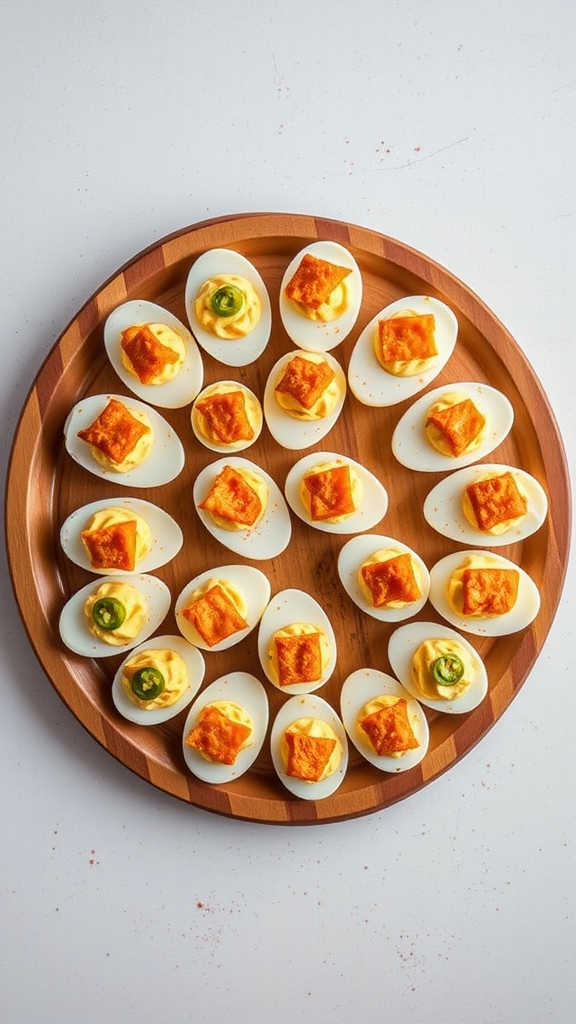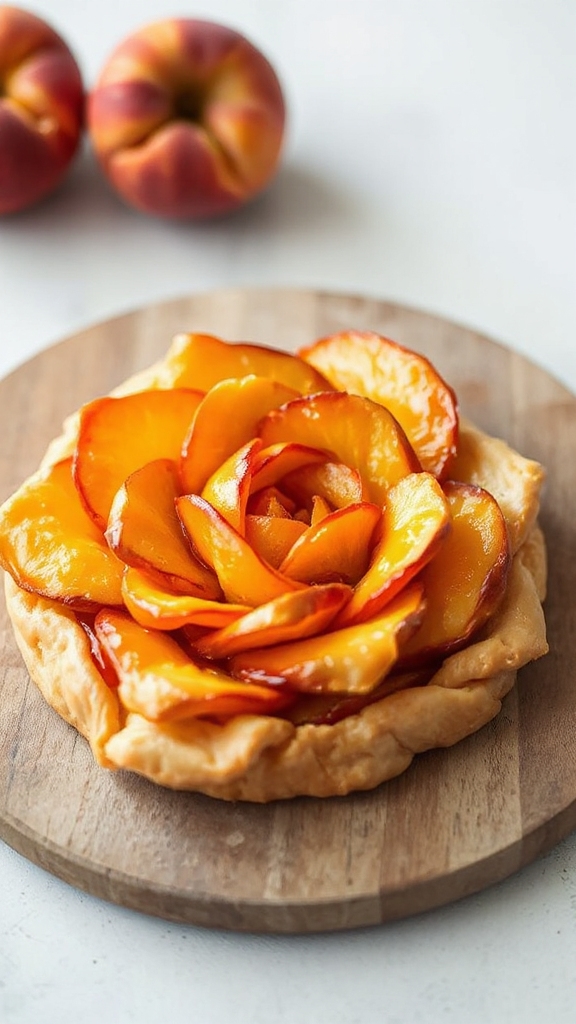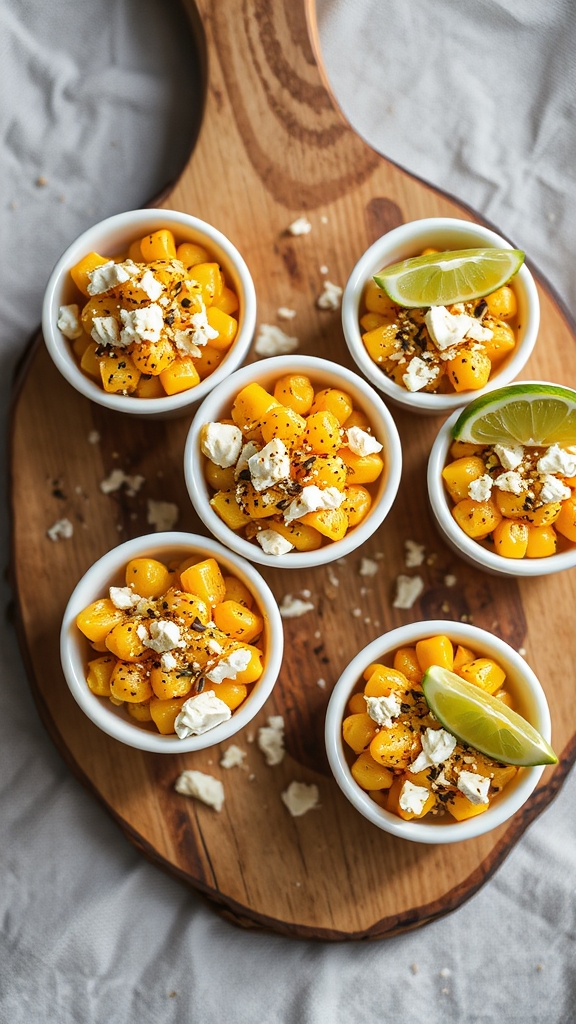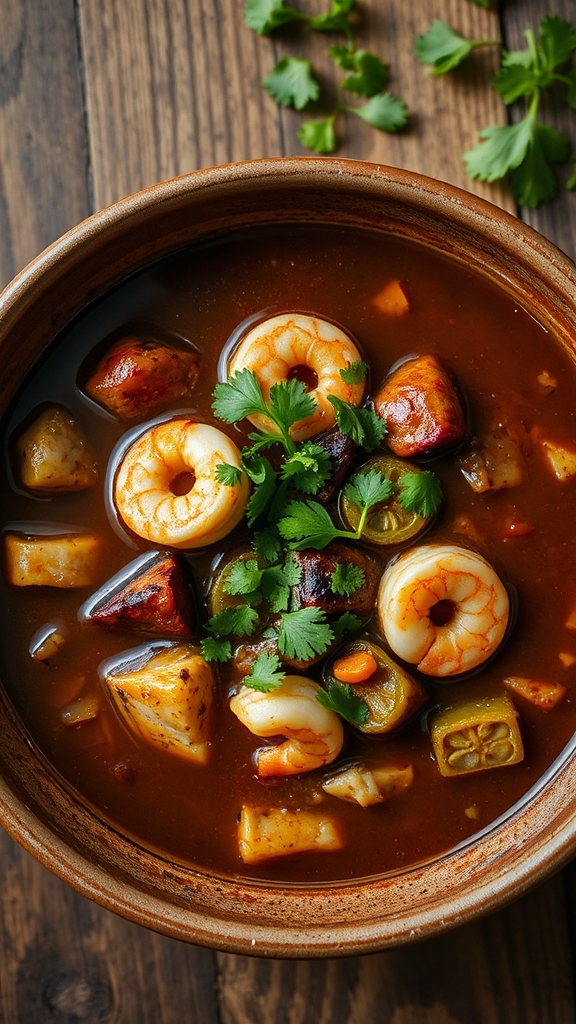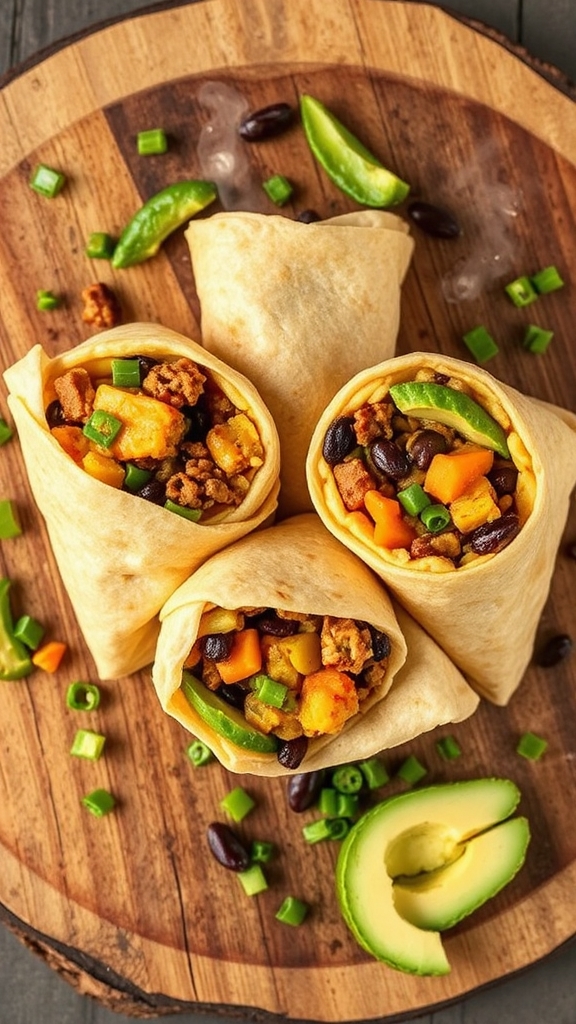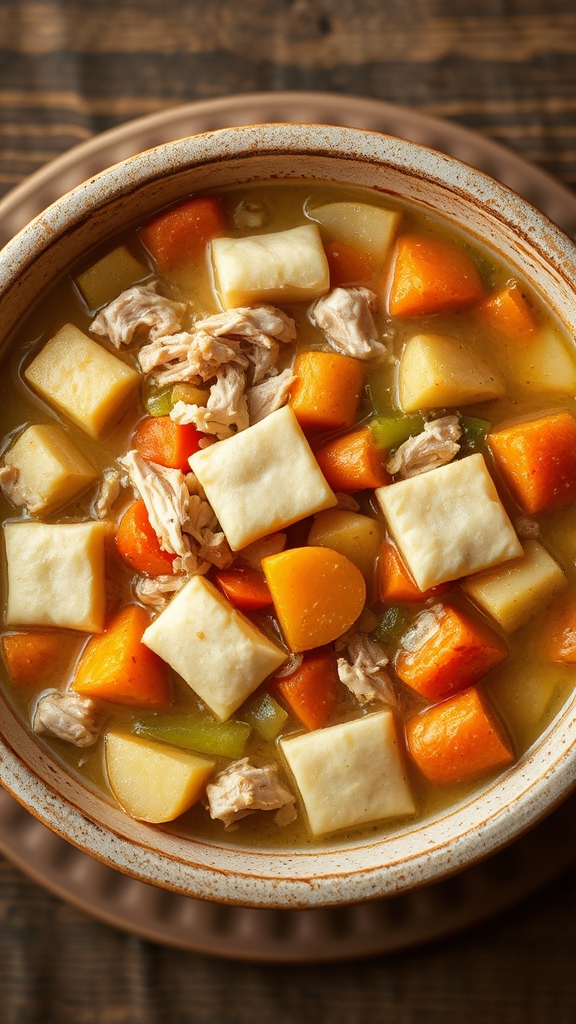Three Sisters Stew (Corn, Beans, Squash)
For a flavorful fusion of corn, beans, and squash, discover Three Sisters Stew's secrets that will transform your next meal.

I’ve always cherished Three Sisters Stew, an Indigenous dish from Iroquois and other North American tribes, symbolizing the harmony of corn, beans, and squash grown together. In my version, I combine broth, cumin, sage, and fresh veggies, then sauté and simmer for 20-30 minutes with optional tweaks like different beans or herbs. You’ll discover more on ingredients, steps, and tools as we go.
History
Three Sisters Stew originates from Indigenous North American cultures, particularly among tribes like the Iroquois and other Native American groups, where it draws from the “Three Sisters” agricultural method of planting corn, beans, and squash together, symbolizing interdependence and sustainability in their cuisine.
Regional variations are significant, as they adapt to local ingredients—such as different types of corn or beans in the Southwest versus the Northeast—reflecting biodiversity, cultural adaptations, and the dish’s role in preserving traditional practices.
Traditionally, it’s served during harvest festivals, community gatherings, or ceremonial occasions like powwows, emphasizing themes of gratitude, nourishment, and communal harmony.
Ingredients
– Broth or stock, the liquid glue that ties it all in – after all, what’s a stew without that cozy bath to simmer in?
You’ll need about 4 to 6 cups of vegetable or chicken broth; go for low-sodium if you’re watching things, because it lets the other ingredients shine through, and choosing homemade might make you feel extra accomplished, even if it’s from a box this time.
– Herbs and spices, the flavor flair that adds personality – wouldn’t it be dull without a bit of zing to keep you guessing?
Start with 1 teaspoon each of ground cumin and dried sage, plus a pinch of salt and pepper to taste; they bring earthy notes and a hint of warmth, like old friends dropping by for a chat, and maybe you’ll experiment a little, because who says you can’t tweak tradition with a playful twist?
– Optional veggies for extra flair, since sometimes you just want to jazz things up – ever thought about how a few extras can turn good into great?
Consider adding 1 cup of diced bell peppers or carrots for color and crunch; they’re not always in the classic mix, but they sneak in that extra nutrition and variety, making your stew feel like a personalized adventure rather than just another recipe.
– A splash of oil or fat, the quiet enabler that gets the party started – I bet you’d agree it’s the unsung tool in the kitchen toolbox?
Use 2 tablespoons of olive or vegetable oil for sautéing; it helps caramelize those onions and garlic without sticking, and if you end up with a little splatter, well, that’s just the price of creating something delicious, right?
– Water, if needed, to adjust that perfect consistency – because let’s be honest, stews can be finicky like that.
Add 1 to 2 cups as you go, depending on how thick or thin you like it; it’s the simple balancer, ensuring everything melds together smoothly, almost like a gentle rain on a summer day.
Cooking Steps
Let’s delve into making this hearty Three Sisters Stew – it’s all about building flavors step by step, like piecing together a puzzle that ends up delicious. First, grab that 2 tablespoons of olive or vegetable oil and heat it in a large pot over medium heat; this is your chance to get things started without any sticking drama, because who wants a burnt mess when you’re aiming for comfort in a bowl? Once the oil is shimmering, add in any diced onions or garlic if you have them – they’re not listed but often sneak into stews for that sweet, aromatic base – and sauté for about 5 minutes until they’re soft and fragrant, giving your stew that inviting aroma right from the start.
Next, stir in the main stars: typically, you’d add 2 cups of cooked beans, 2 cups of corn kernels, and 2 cups of cubed squash, along with those 4 to 6 cups of vegetable or chicken broth to create a cozy bath for everything.
Season with 1 teaspoon each of ground cumin and dried sage, plus a pinch of salt and pepper, and let it all simmer together on low heat for 20-30 minutes; this is where the magic happens, as the flavors mingle like old friends at a gathering, and you might find yourself peeking in the pot, wondering if it’s ready yet.
If things look too thick, go ahead and pour in 1 to 2 cups of water to adjust, turning your stew into just the right consistency – not too soupy, not too chunky, because balance is key in the kitchen game.
Finally, for those optional extras like 1 cup of diced bell peppers or carrots, toss them in about 10 minutes before the end to keep some crunch; it’s a playful way to customize, almost like giving your recipe a fun twist without overcomplicating things.
Stir occasionally and taste as you go, adjusting seasonings if needed – maybe a little more cumin for that extra earthiness, or perhaps not, since we all have our preferences.
Once it’s all simmered to perfection, serve it up warm, and you’ll have a stew that’s not just food, but a satisfying story in every bite.
Tips and Variations
When it comes to tweaking your Three Sisters Stew, think about swapping in different beans like black beans instead of the usual kidney ones for a bit more bite and color, because who doesn’t love a stew that looks as good as it tastes?
You could amp up the veggies by adding a handful of fresh spinach or kale towards the end, letting them wilt just enough to keep things nutritious without turning everything into a mushy mess, and that way, you’re packing in extra vitamins while keeping the Native American-inspired trio of corn, beans, and squash front and center.
For a fun twist, experiment with herbs—maybe toss in some fresh thyme alongside the cumin and sage to add a layer of earthy depth that surprises the palate, or if you’re feeling adventurous, dial up the heat with a pinch of chili flakes, wondering all the while if it’s going to be too spicy or just right for that cozy evening vibe.
And here’s a little secret for getting it perfect every time, balance the broth with a splash of lime juice at the end to brighten the flavors, almost like giving your pot a playful nudge when it’s feeling a tad flat, because sometimes, a stew needs that extra spark to shine without overdoing it.
Tools
| Kitchen Tool | Purpose |
|---|---|
| Large pot or Dutch oven | For simmering and cooking the stew |
| Chef’s knife | For chopping vegetables like squash, onions, and herbs |
| Cutting board | To provide a safe surface for preparing ingredients |
| Wooden spoon or spatula | For stirring the stew without scratching the pot |
| Measuring cups | To measure liquids like broth or water accurately |
| Measuring spoons | To measure spices, herbs, and smaller ingredients |
| Can opener | For opening canned beans or corn, if using |
| Ladle | For serving the stew once it’s ready |

Hi There! I'm Stephanie Miller: Elementary teacher from Columbus, OH sharing grandma's treasured American recipes! 50 years young, yoga enthusiast & kitchen storyteller. Welcome to my food family! 🍰❤️

